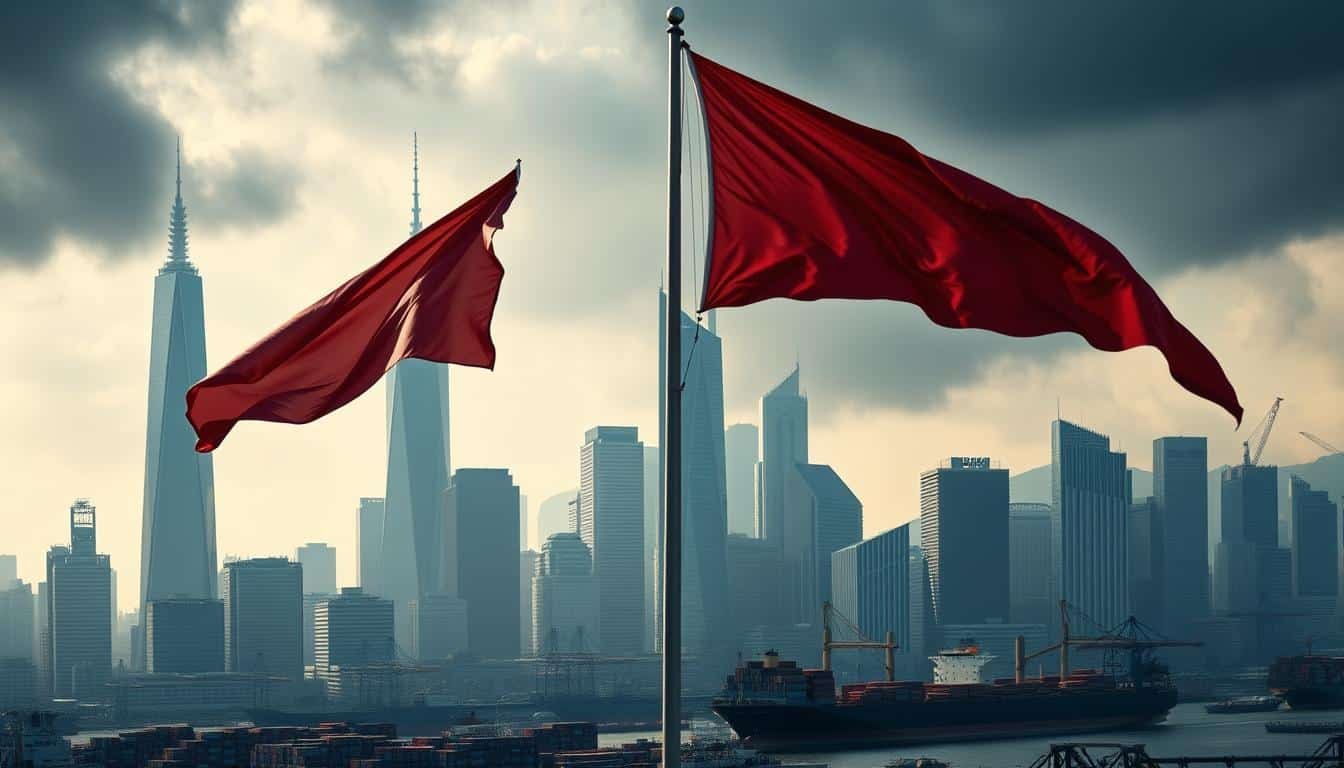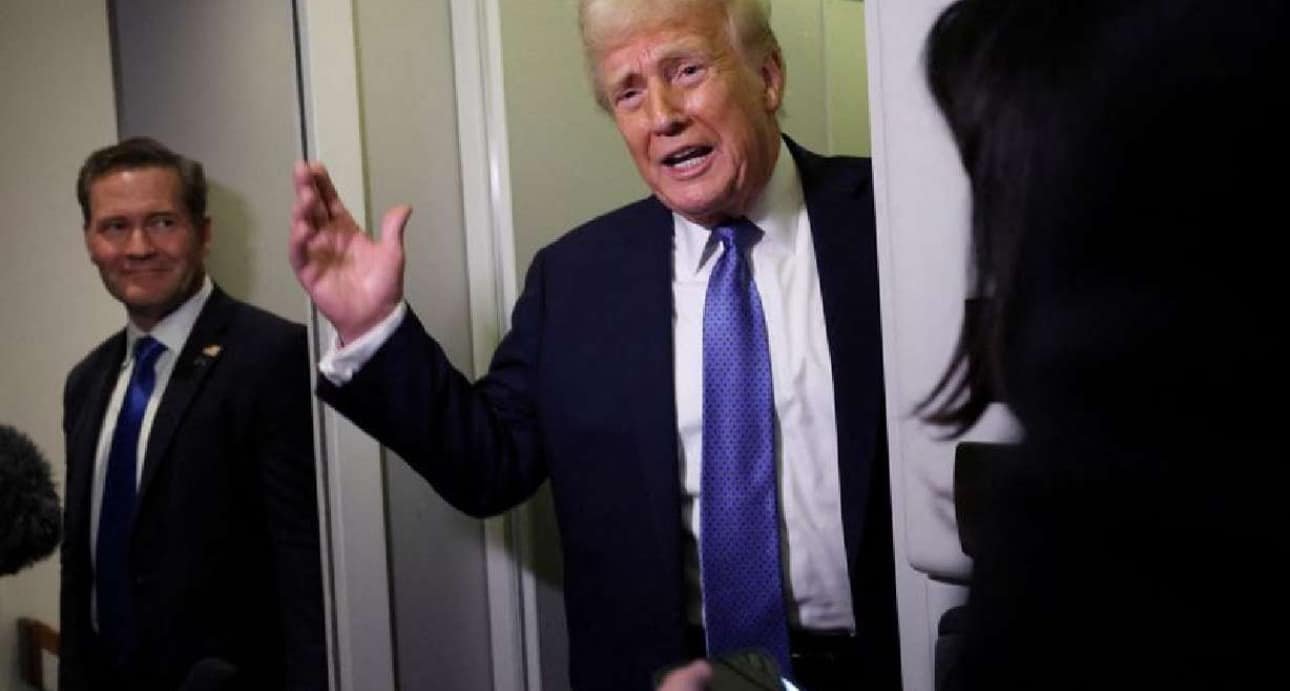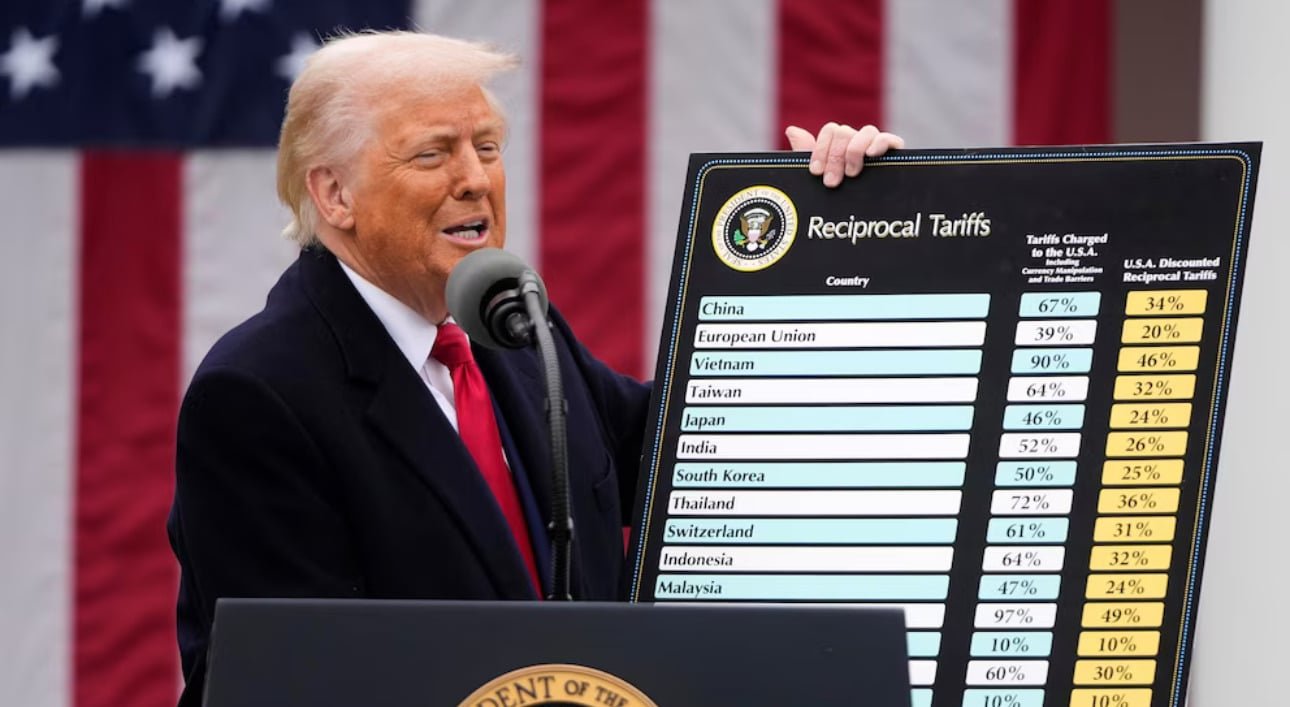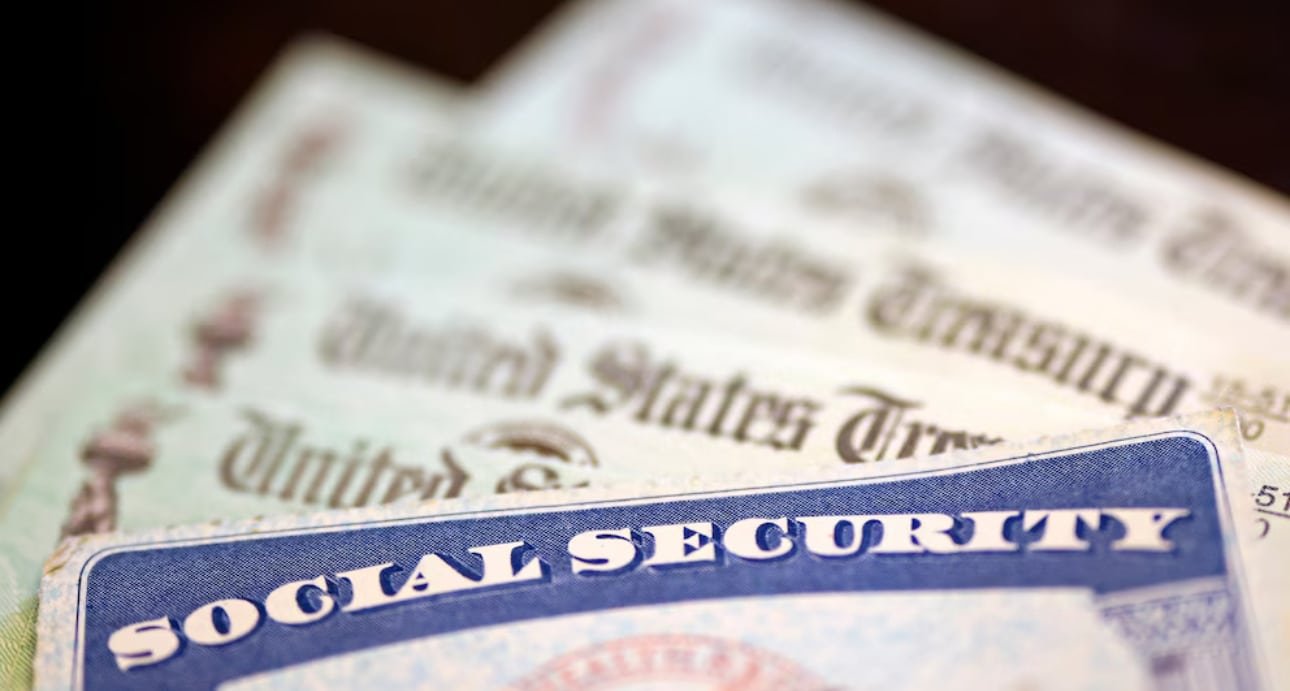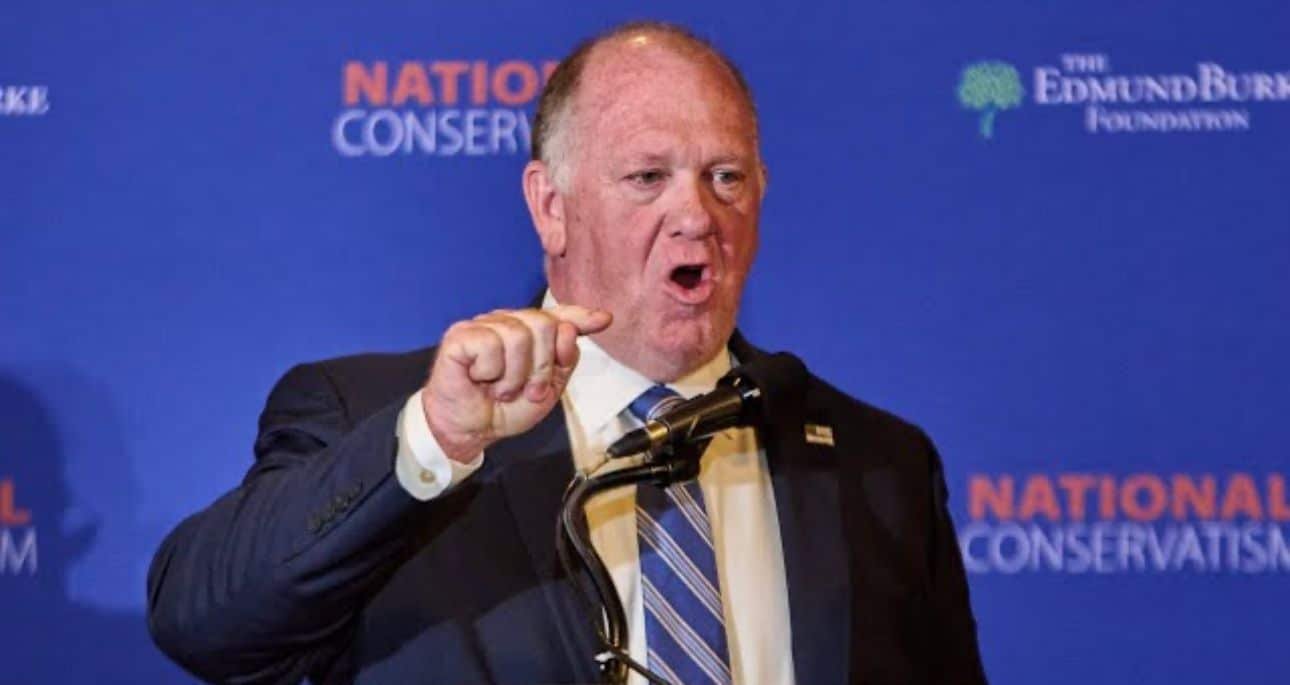What is a Trade War? Understand the Basics
A trade war is when countries fight over trade by putting up barriers. This can include tariffs and quotas. It’s a big change from the idea of free trade. The International Monetary Fund says these fights can hurt both sides a lot.
For example, on July 6, 2018, the U.S. put tariffs on $34 billion worth of Chinese goods. These were high-tech items to stop China’s Made in China 2025 plan. President Trump said tariffs could go up to $500 billion. By 2021, imports from China had hit $506.4 billion, making things even harder.
Trade wars change how countries do business with each other. They can make economies worse and lead to hard times. The Smoot-Hawley tariffs of the 1930s show how bad trade fights can get.
Key Takeaways
- A trade war involves imposing tariffs and quotas as retaliatory measures between countries.
- Events like the U.S.-China trade conflict illustrate the rapid escalation that can occur.
- Trade restrictions can increase prices and impact job markets domestically.
- Historical trade wars provide context for current economic strategies.
- Understanding trade wars is crucial to grasping the complexities of global economics.
Understanding the Concept of Trade Wars
A trade war is when countries fight economically by using protectionist measures. This includes tariffs, quotas, and other restrictions on imports. This article will explain trade wars and their key characteristics.
Definition of a Trade War
Trade wars happen when countries try to stop imports and protect their own industries. They use tariffs, which are taxes on imports, making them more expensive. This affects what consumers can buy.
Key Characteristics of Trade Wars
- Retaliation Mechanism: Trade wars often start a cycle of retaliation. When one country raises tariffs, the other does the same.
- Protectionist Policies: Countries use import quotas and subsidies to help their own markets. This is to fight off foreign competition.
- Mutual Damage: These measures might help local industries but hurt both countries’ economies. They can lead to less global trade.
Understanding trade war characteristics helps us see how they affect economic relationships. Protectionist policies might seem to help at first but can cause problems later. These include higher prices and slower economic growth.
What is a Trade War?
A trade war is a big fight between countries over trade. It happens when one country feels another is not playing fair. To protect their own, countries start using tariffs and other barriers.
Economic Conflict Between Countries
These fights often start because countries want to keep their markets safe. For example, President Donald Trump put a 10 percent tax on Chinese goods on February 4. This big change in trade rules is meant to cut down imports.
But, these taxes can make things more expensive for people. The Tax Foundation says these tariffs could bring in $100 billion a year for the U.S. government. This makes some countries want to use tariffs more.
Protectionist Policies Involved
Protectionist policies are key in trade wars. Tariffs, or taxes on imports, can raise prices and mess up supply chains. For example, tariffs on Canada and Mexico could make cars $3,000 more expensive in the U.S.
When countries hit back with their own tariffs, things get worse. In the U.S.-China trade war, tariffs cost U.S. farmers $20 billion. This shows how protectionist policies can hurt everyone involved.
Causes of Trade Wars
Trade wars come from many factors, different for each country. Knowing what causes them helps us understand the economic and political world. This world shapes how countries relate to each other.
Unfair Trading Practices
When countries feel they’re treated unfairly, they might impose tariffs. This can happen if a country changes its currency value to help its exports. Or if it gives too much help to its own industries.
These actions can hurt foreign businesses. They might then raise tariffs to protect their own markets.
Pressure from Domestic Industries
Local groups and industries often push for protection from foreign goods. They want to keep jobs and profits in their country. With more competition from abroad, they fear losing jobs.
So, they ask for tariffs to keep local production safe from global competition.
Political Motivations for Imposing Tariffs
Politics also plays a big part in trade wars. Leaders might use tariffs to win votes, like during elections. They might also use tariffs to show strength or to get back at rivals.
Effects and Impact of Trade Wars
Trade wars have complex effects, both immediate and long-term. It’s important to understand these impacts. This section will explore both, showing how protectionist policies affect the economy.
Short-term Economic Effects
Trade wars can cause big changes in the economy right away. For example, U.S. manufacturing and freight saw drops during the trade war. This shows weaknesses in our supply chains.
- At first, some jobs were saved, which brought a bit of hope.
- But, U.S. companies lost over $1.7 trillion in stock value because of tariffs on Chinese imports.
- By September 2019, the trade war cost nearly 300,000 American jobs.
Tariffs also made import duties go up from about 3.7% to 25.8%. This led to higher prices for imported goods. These changes show the quick economic effects of trade policy changes.
Long-term Consequences on Global Trade
Trade wars can hurt economic growth and global competitiveness over time. Companies may become isolated, which can slow down innovation and productivity. This can lead to higher prices for consumers and fewer jobs.
| Impact Area | Estimated Effect |
|---|---|
| Reduction in U.S. GDP | Approximately 0.3% to 0.7% |
| Loss of Full-time Jobs | Up to 309,000 jobs |
| Long-term GDP Reduction | 0.2% projected due to trade barriers |
| Impact on Employment | Estimated 142,000 full-time jobs lost |
Understanding both the short-term and long-term effects of trade wars is key. Trade wars change economic priorities and create market uncertainty.
Examples of Notable Trade Wars
Trade wars have changed the world’s economy in big ways. They affect how countries work together and how markets function. Knowing about these trade wars helps us understand today’s and yesterday’s economic plans.
U.S.-China Trade War
The U.S.-China trade war started in 2018. It’s a big fight between the world’s two biggest economies. The U.S. put tariffs on many Chinese goods, and China hit back with its own tariffs.
This back-and-forth has messed up global supply chains. It has also raised prices for things we buy. Companies and industries are struggling with these tariffs, showing how big the U.S.-China trade war’s impact is.
Historical Context: Smoot-Hawley Tariff
The Smoot-Hawley Tariff was passed in 1930, during the Great Depression. It raised tariffs on over 900 imported goods. This made the average U.S. tariff over 45%.
Countries hit by these tariffs fought back, cutting down international trade a lot. This shows how protectionist policies can make economic problems worse. The Smoot-Hawley Tariff doubled U.S. unemployment rates, warning us of trade wars’ dangers.
Trade Wars in the 21st Century
In the 21st century, trade conflicts have changed a lot. We’ve seen fights between the U.S. and Canada over tariffs and trade rules. There have also been long battles like the Banana Wars, showing how hard it is to negotiate international trade.
These fights show how tariffs and restrictions can hurt global economic ties and market stability. Learning about these modern trade wars shows why we need good trade policies to help countries work together.
Conclusion
A trade war is a complex economic battle between countries. Understanding what it is and its history helps us see its big impact. It affects more than just money, like jobs, with the U.S. losing about two million jobs in industries competing with China from 1997 to 2011.
The Smoot-Hawley Tariff Act of 1930 teaches us a hard lesson. It shows how protectionist policies can harm global trade, leading to big problems like the Great Depression. Today, the trade situation is still tense, with firms planning for a long U.S.-China trade war.
As countries face these challenges, looking back at past trade wars is key. We learn the value of working together internationally to avoid the bad effects of going it alone. This is crucial in today’s world of global trade.
FAQ
What is a trade war?
A trade war is when countries fight over trade. They use things like tariffs or quotas to block each other’s goods. This happens when they feel they’re not being treated fairly.
What are the key characteristics of a trade war?
Trade wars have a cycle of retaliation and protectionism. Both sides suffer economically. Tariffs and trade restrictions keep getting higher.
What causes trade wars?
Trade wars start with unfair trade practices. Domestic industries push for protection. Politicians may use tariffs to win votes.
What are the short-term effects of trade wars?
At first, trade wars might help some domestic industries. They get less competition, which can save jobs.
What long-term consequences result from trade wars?
Trade wars can hurt global competitiveness and raise prices. They might also lead to job losses. This slows down economic growth.
Can you provide an example of a significant trade war?
The U.S.-China trade war started in 2018. It involved tariffs that affected global supply chains and prices of goods.
What was the Smoot-Hawley Tariff?
The Smoot-Hawley Tariff was passed in 1930. It raised tariffs on many imports. This led to other countries retaliating, cutting trade and helping cause the Great Depression.
How have trade wars evolved in the 21st century?
In the 21st century, trade wars have shown lasting impacts. Tariffs and barriers affect international relations and economies. New conflicts keep shaping global policies.
Source Links
- How Would a Trade War Affect You? – https://www.investopedia.com/insights/how-would-trade-war-affect-you/
- What’s a trade war? – https://theconversation.com/whats-a-trade-war-244750
- Trade Wars – https://corporatefinanceinstitute.com/resources/economics/trade-wars/
- Britannica Money – https://www.britannica.com/money/trade-war-meaning
- Trade Wars: What do they Mean? Why are they Happening Now? What are the Costs? – https://www.nber.org/system/files/working_papers/w25762/w25762.pdf
- What Trump’s Trade War Would Mean, in Nine Charts – https://www.cfr.org/article/what-trumps-trade-war-would-mean-nine-charts
- Tracking the Economic Impact of the Trump Tariffs – https://taxfoundation.org/research/all/federal/trump-tariffs-trade-war/
- Why the US-China trade war could last another five years – https://www.rochester.edu/newscenter/what-is-trade-war-us-china-614652/
- Trade Wars: History, Pros & Cons, and U.S.-China Example – https://www.investopedia.com/terms/t/trade-war.asp
- Trade war – https://en.wikipedia.org/wiki/Trade_war
- More pain than gain: How the US-China trade war hurt America – https://www.brookings.edu/articles/more-pain-than-gain-how-the-us-china-trade-war-hurt-america/
- The Economic Impacts of the US-China Trade War – https://www.nber.org/system/files/working_papers/w29315/w29315.pdf
- Top 5 Trade Wars Throughout History | International Relations Major | Masters in International Relations – https://www.internationalrelationsedu.org/2018/05/top-5-trade-wars-throughout-history/
- What Are Some Trade Wars in History? – https://www.thomasnet.com/insights/what-are-some-trade-wars-in-history/
- Who Benefits from Trade Wars? – https://www.intereconomics.eu/contents/year/2018/number/1/article/who-benefits-from-trade-wars.html
- Trade wars, explained – https://theweek.com/business/economy/trade-wars-explained

